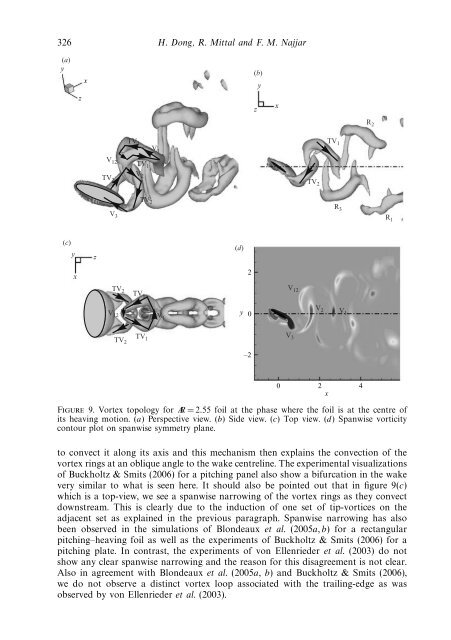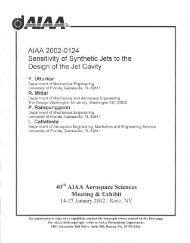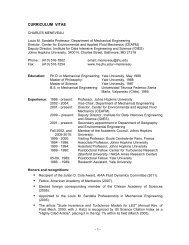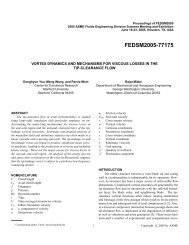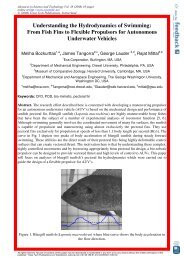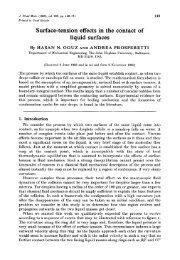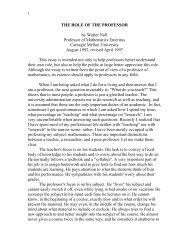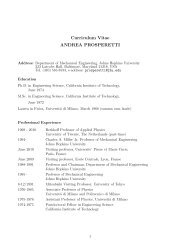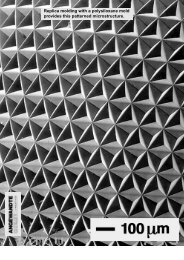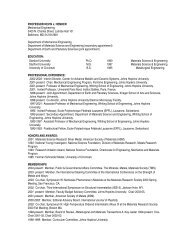Wake topology and hydrodynamic performance of low-aspect-ratio ...
Wake topology and hydrodynamic performance of low-aspect-ratio ...
Wake topology and hydrodynamic performance of low-aspect-ratio ...
You also want an ePaper? Increase the reach of your titles
YUMPU automatically turns print PDFs into web optimized ePapers that Google loves.
326 H. Dong, R. Mittal <strong>and</strong> F. M. Najjar(a)yzx(b)zyxTV 1 TV 1V 1TV 1TV 2 TV 2V 3V 12V 2TV 2(c)yxzR 2R 3V V 12 1V1y 0V 2R 1(d)2TV 2 TV 1V 12TV 2TV 1V 3–20 2 4xFigure 9. Vortex <strong>topology</strong> for AR =2.55 foil at the phase where the foil is at the centre <strong>of</strong>its heaving motion. (a) Perspective view. (b) Side view. (c) Topview.(d) Spanwise vorticitycontour plot on spanwise symmetry plane.to convect it along its axis <strong>and</strong> this mechanism then explains the convection <strong>of</strong> thevortex rings at an oblique angle to the wake centreline. The experimental visualizations<strong>of</strong> Buckholtz & Smits (2006) for a pitching panel also show a bifurcation in the wakevery similar to what is seen here. It should also be pointed out that in figure 9(c)which is a top-view, we see a spanwise narrowing <strong>of</strong> the vortex rings as they convectdownstream. This is clearly due to the induction <strong>of</strong> one set <strong>of</strong> tip-vortices on theadjacent set as explained in the previous paragraph. Spanwise narrowing has alsobeen observed in the simulations <strong>of</strong> Blondeaux et al. (2005a, b) for a rectangularpitching–heaving foil as well as the experiments <strong>of</strong> Buckholtz & Smits (2006) for apitching plate. In contrast, the experiments <strong>of</strong> von Ellenrieder et al. (2003) do notshow any clear spanwise narrowing <strong>and</strong> the reason for this disagreement is not clear.Also in agreement with Blondeaux et al. (2005a, b) <strong>and</strong> Buckholtz & Smits (2006),we do not observe a distinct vortex loop associated with the trailing-edge as wasobserved by von Ellenrieder et al. (2003).


